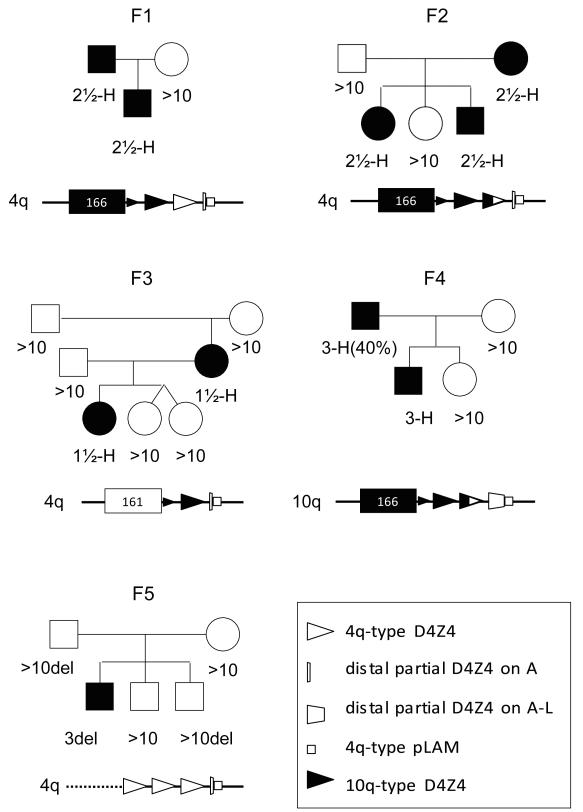Fig. 3.
Pedigrees of FSHD1 families with complex pathogenic chromosomes. Families F1-F4 all carry a hybrid D4Z4 repeat that commences with chromosome 10-type repeat units (closed triangles), but end with 4-type repeat units (open triangles). In family F3 a meiotic rearrangement between chromosomes 4 and 10 generated a short hybrid repeat structure on 4A161. In family F4, this pathogenic repeat is located on chromosome 10 and originates from a mitotic D4Z4 contraction in the mildly affected father which is transmitted to his affected son. Family F5 represents a disease chromosome in which in addition to partial deletion of the D4Z4 repeat, the region proximal to the D4Z4 repeat is also deleted.

